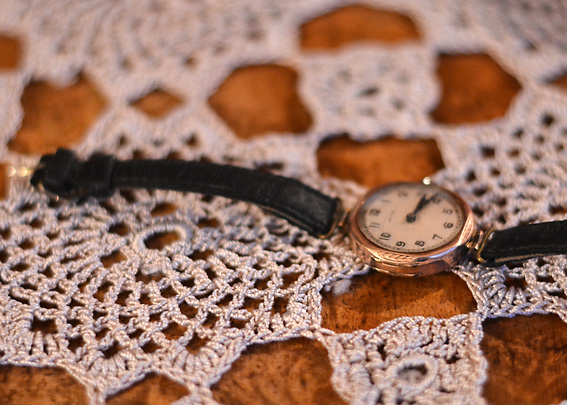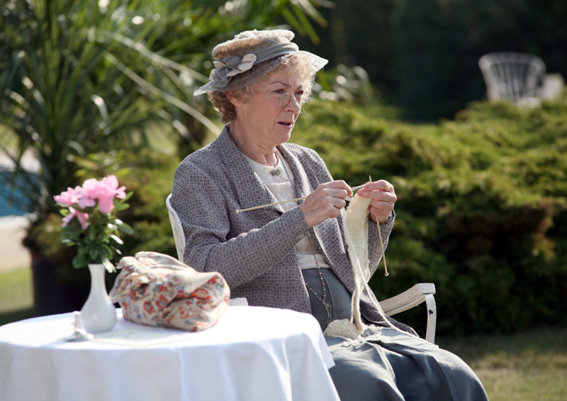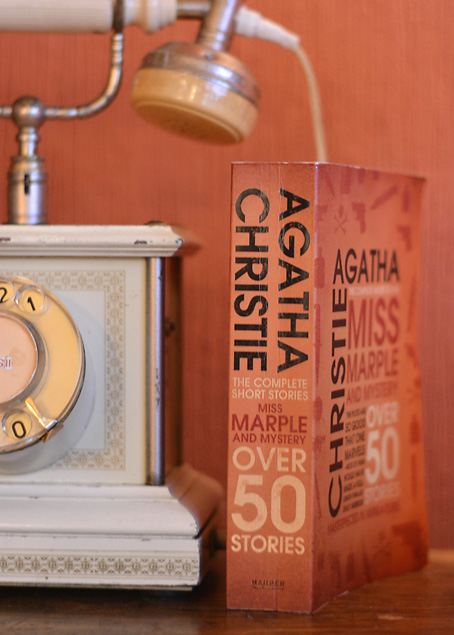How could I resist the very first tales about Miss Marple; the original murder mystery knitter who we have all come to know and love?
The Thirteen Problems is a collection of short stories by Agatha Christie. I decided that it was time for me to read them as they are almost 90 years old; they were first published individually in various monthly magazines between 1927 and 1931.

As well as being the earliest tale about Miss Marple, the first story (The Tuesday Night Club) also introduces the writer Raymond West (Miss Marple’s nephew) and ex-police commissioner Sir Henry Clithering.
The first six stories involve an after dinner entertainment. Miss Marple and five distinguished guests take it in turns to relate an event in the form of an unresolved puzzle. Thus they form a sort of fellowship which they call the Tuesday night club. At each meeting one of the guests poses a new mystery to which only they know the wrongdoer. In turn the other members of the club try to unravel the solution.
The five guests only invite the elderly spinster into the group as a politeness. As she sits knitting “something white and soft and fleecy” in the corner, the guests almost discount her. They, understandably, believe she has had an unworldly life in St Mary Mead and knows little of the outside world. Of course, she surprises them all by outdoing them each time!

The second set of six stories follows the same outline of after dinner mysteries set by one of six diners. Only two members are retained from the first six tales; Miss Marple and Sir Henry Clithering. The other members of the party are different, but not any less notable. The setting this time is the house of Miss Marple’s neighbours Colonel and Dolly Bantry who we meet here for the first time.
The thirteenth and final story in the set Death by Drowning has a different format. In this story, Miss Marple, finding that Henry Clithering is visiting St Mary Mead, asks for his help to investigate the death of a local girl. Miss Marple is convinced that an innocent party will be hanged for the murder unless he intervenes. Even though Sir Henry is aware of Miss Marple’s uncanny ability to solve murder mysteries he warns her that getting involved in a current case is a very serious affair. On her insistence, he nevertheless agrees to contact the local police and carry out some initial investigations on the proviso that if these amount to nothing she will drop the case entirely. Of course her solution proves, yet again, to be completely correct.

Miss Marple is very modest in her demeanor. She does not consider herself a detective but says that she just understands the universal attribute of human nature. By identifying with the personalities in her village and realizing who carried out which deed, she can easily relate this to these unresolved cases. As she says “human nature is much the same everywhere, and, of course, one has opportunities of observing it at closer quarters in a village”.
There is something endearing about the image of Miss Marple, sitting quietly knitting, whilst beside her the dignitaries debate each problem. Then, after they have all given up, Miss Marple speaks up and gets the right solution every time!
Being written in 1927, the first image of Miss Marple may seem a tad old fashioned now. She is described as wearing a black brocade dress with Mechlin lace to the front of her bodice and adorned by black lace mittens and cap. Later she is described as also wearing an old lace fichu. However, this just adds to her charm, in my humble opinion.
Miss Marple often seems so intent on her knitting that she does not seem to be paying attention to the discussions at all. Now and then, though she drops a stitch and you realise that she is (of course) knitting routinely whilst at the same time mulling over the problem at hand. As she says, “sitting here with one’s knitting, one just see the facts”.

The Thirteen Problems has some appealing mysteries. They are well plotted and well written and surprisingly they don’t always revolve around murder. The clues are all there in the stories but they are so well written that it is not easy to solve them. Three of the stories have been made into full length television episodes (The Blue Geranium, The Herb of Death and The Thumb Mark of Saint Peter). Although a few would not be able to make this transition, many more could.
The thirteen stories are connected although they still can be seen as separate stories. As they were published independently there are repetitive segments within each story. The incredible intuition of Miss Marple lends the stories its great strength, because and maybe because it is so hard to believe.
I must admit that I am a fan of Agatha Christie’s novels and the television series. So it was a treat for me to go back to the early days of Miss Marple and discover how she and familiar characters like Henry Clithering and Dolly Bantry were introduced.

The Thirteen Problems transports you to a different time. It is comfort reading from another era and as such it is a really enjoyable read. I read The Thirteen Problems as part of Miss Marple and Mystery; The Complete Short Stories, which was published in 2008 by Harper.



I loved this post and I think that your images are beautiful. My mother adores Agatha Christie and I have bought this for her as a little pre Christmas gift on your recommendation. Thank you
Hi Tracy, I really enjoyed this collection of Agatha Christie’s Miss Marple Stories. I’m sure your mum will be delighted with the book! Best wishes, Nicolette